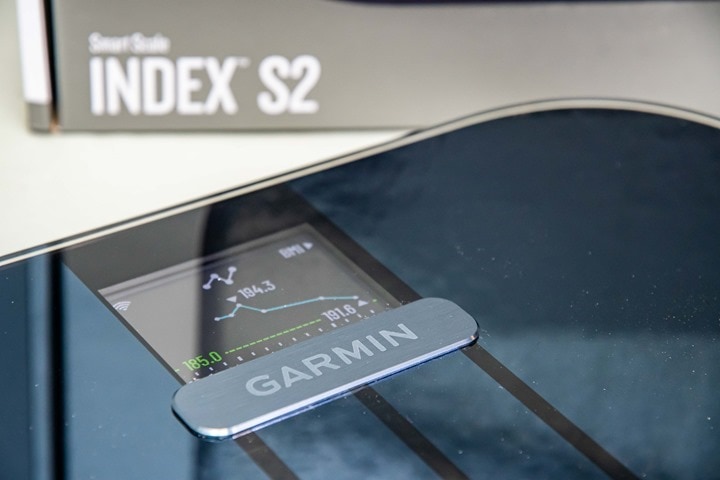
Garmin has just announced the new Index S2 smart WiFi scale, building slightly upon the previous first generation Index WiFi scale released nearly 5 years ago. This new model switches to a color display that’ll show weight trending information, helping to visualize the normal day to day fluctuations. It also adds a handful of tweaks like being able to customize the data widgets on-screen, showing difference to previous weigh-in, as well as increasing the sensitivity of some of the sensors driving the algorithms related to body fat & impedance based measurements. Overall it’s a minor upgrade.
I’ve been using the scale for a bit now, but also just as importantly the original Index scale for quite some time before that. So I’ve got a pretty good idea side by side on how they work. So I’ll dig into all the nuances between the two, so you can figure out if it’s worth the cash, since, it’s pretty expensive at $ 149.
Note that I was sent a media loaner of the Index S2 scale, which as usual I’ll send back once I’m done here. If you found this review useful you can hit up the links at the end of the review to help support the site. Oh, and the Index 1 scale is one I bought myself a while back.
Finally, look, I get it – this is a weight scale – so I’m gonna try my best (and probably fail) at making this review semi-digestible. Wish me luck.
What’s new:
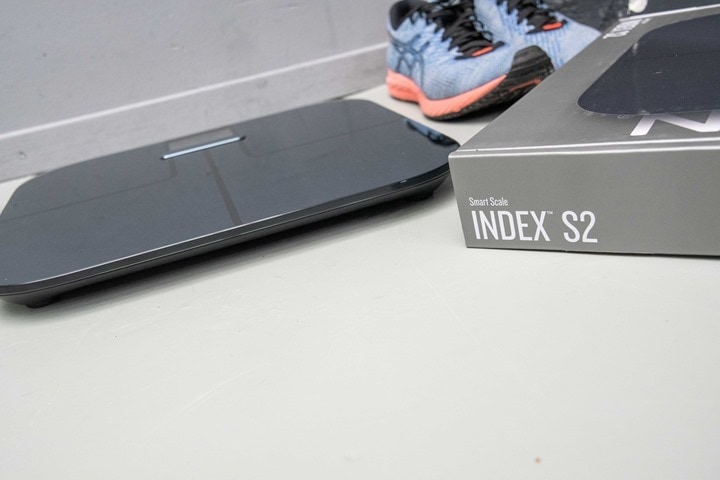
Now, to run through what’s new on this scale, I’ve got the Index 1 and Index S2 side by side. Both literally and figuratively. I’ve been using them side by side, seeing how they compare for a bit now. Here’s all the differences to them (and yes, these are mostly minor):
– Added new color screen
– Added weight trend to show 30 days of data
– Added previous weigh-in vs current weigh-in data difference to screen
– Added ability to customize which data (widgets) are shown on scale
– Increased sensitivity of sensors
– Tweaked some algorithms related to body fat & other impedance based measurements (based on increased sensitivity of sensors)
– Can now connect up to 7 WiFi Networks
– Reduced scale size (dimensions) very slightly
That’s in addition to all the baseline bits it previously did:
– Measures weight (lbs/stones/kg)
– Body Mass Index (BMI)
– Body Fat Percentage
– Body Water Percentage
– Skeletal Muscle Mass
– Bone Mass
– Supports up to 16 users
– Maximum weight of 400lbs/181.4kg
– 9 Month Battery Life (4xAAA batteries)
– Uploads via WiFi, configuration via Bluetooth Smart
– Both black and white versions (Pro Tip: The black version is impossible to keep clean, white is half-possible).
So just putting the two scales side by side you can see the main differences are mostly visual (the white one below is the older scale). The size is a bit smaller, though not massively so. And of course, that color display versus the black/white one previously. Albeit, I can’t say having a color display on my weight scale next to the toilet has been a major improvement in my day to day life. Now, if they could run YouTube on that thing…then we’re talkin’!

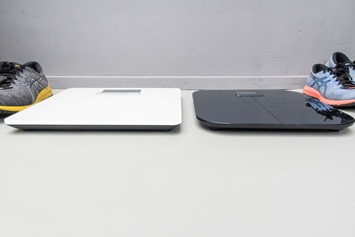
The other thing Garmin says they spend considerable time on was WiFi connectivity, seeming to acknowledge some of the problems people have had with the original Index scale. Though, it does seem like most of those problems have tapered out over the last 6-8 months.
Ok, with those quick newness bits covered, let’s get it out of the box.
What’s in the Box:
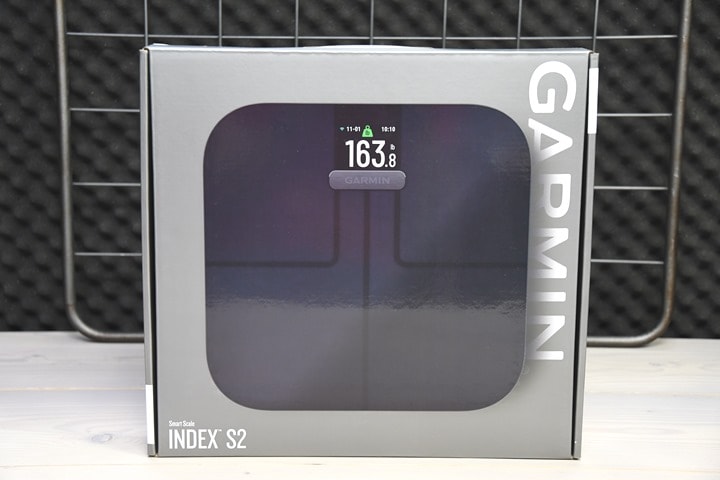
Crack open the relatively thin box of the S2 and you’ll find the scale chilling inside a paper wrapper, with a bit of instructions stop floating in the box somewhere. Underneath the scale is 4 AAA batteries, and four feet to be used if the scale is placed on carpet.
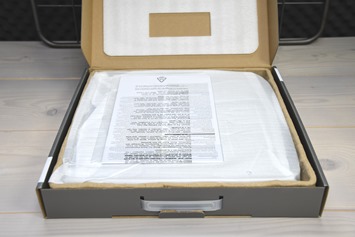
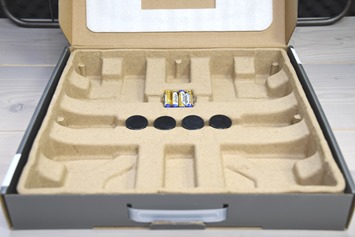
Here’s a closer look at the feet and batteries. You don’t need the feet if placed on a hard surface, but the batteries are required if you want the scale to do anything other than act as a paperweight.
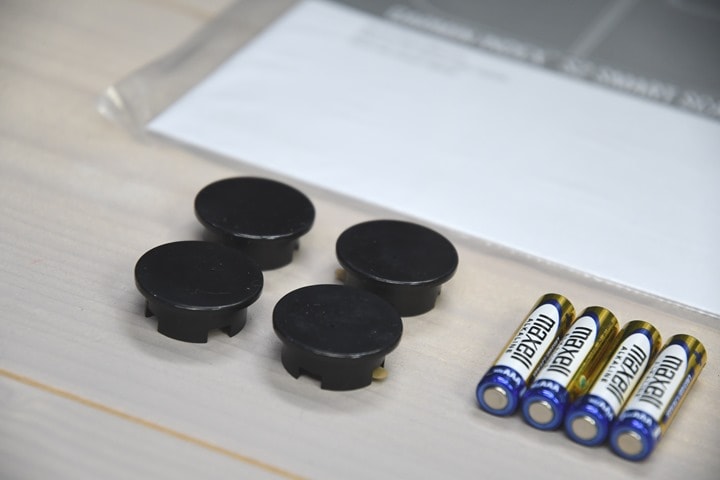 \
\
And here’s the scale sitting atop its wrapper. This is the cleanest it’ll ever be. From this moment forward it’ll look worse, even if you never touch it. Dust collects at an astonishing rate on this thing.
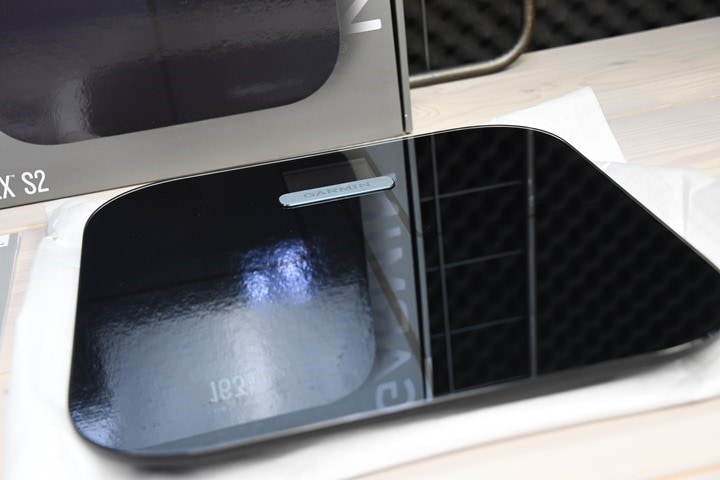
Oh, and here’s the manual. Don’t worry, we’ll cover all the bits as part of this review here.
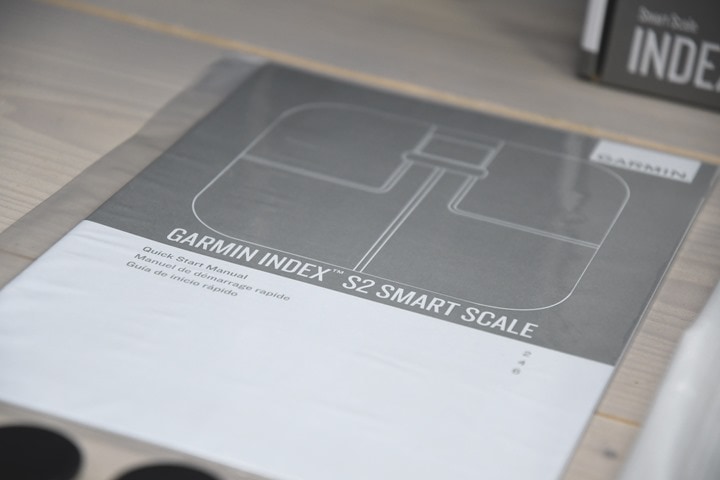
Ok, let’s get it all setup.
Setup & Configuration:
First up we’ll need to stick the batteries inside the S2. I trust that if you’re investing in a WiFi connected smart scale, you’ve got the technical prowess to correctly insert 4xAAA batteries.
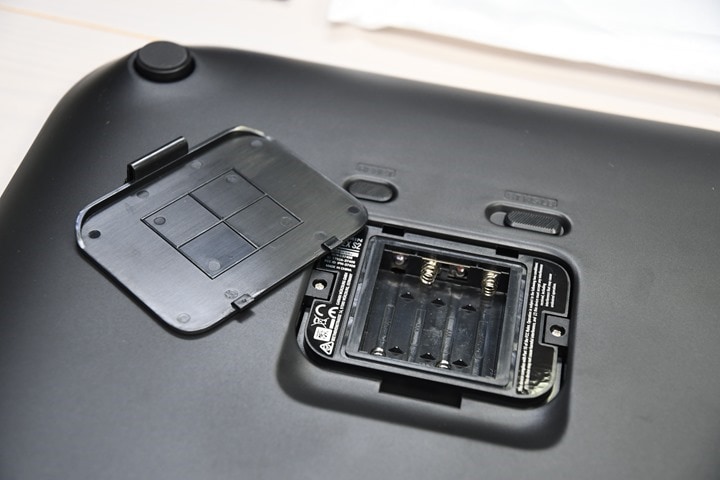
Also, while on the back of the scale you’ll notice two things you can poke at (besides the springs on the battery compartment). The first is a reset button, which kicks the scale into pairing mode, and the second is a selector to switch between Pounds, Kilograms, and Stones.
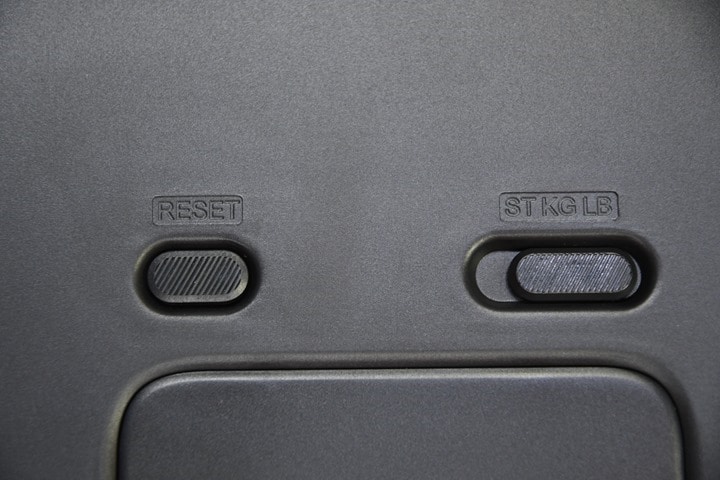
I’ve always found it kinda funny that for a digital scale that shows a gazillion metrics based on information in your account, that it relies upon a physical switch to change the way weight is shown. Perhaps there’s a number of people that need to switch quickly between the modes, I don’t know.
In any event, by time you’re done dorking around with that switch, you’ll find the Index S2 showing off it’s new color screen, waiting for you to pair it up.
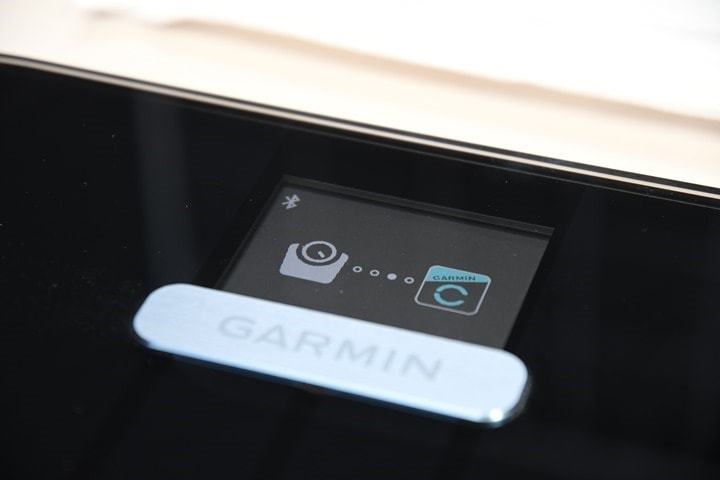
This is where you’ll grab your smartphone to set it up, using the Garmin Connect app. It’ll find the device just like a watch. And, once this post goes live the image and codename Garmin uses will magically change to the correct product image and real name instead of placeholders (Garmin does this for all products, to minimize leaks).
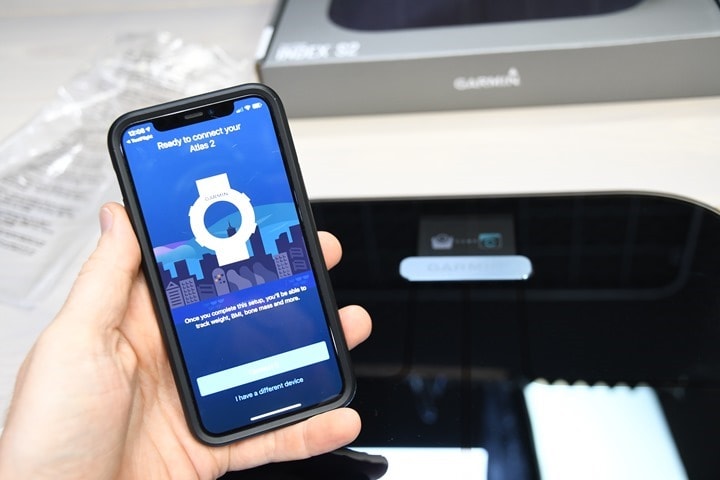
It’ll ask you to confirm the PIN number, to ensure you’re not snooping on your neighbors unconfigured scale or something.
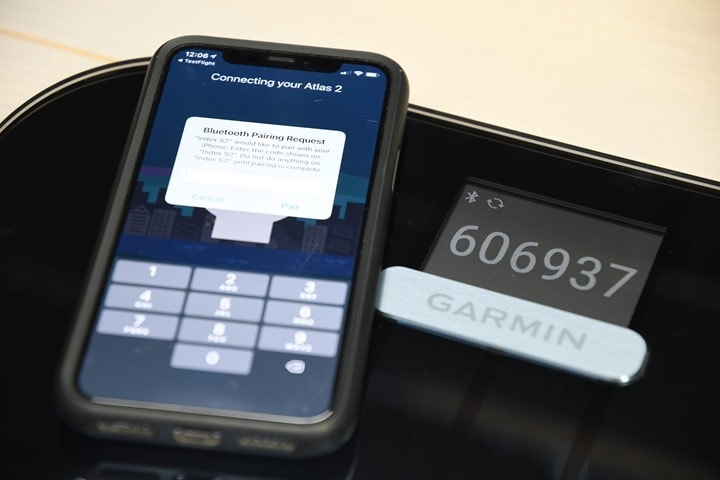
And then finally, it’ll as you for the WiFi information.
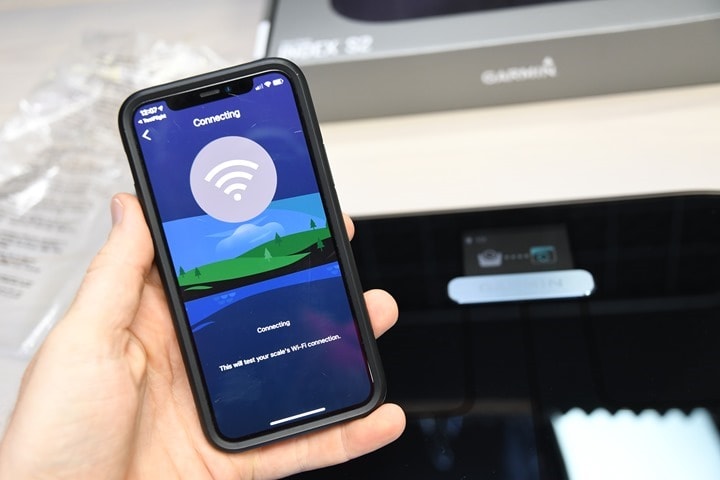
You can select and save up to 7 WiFi networks within the Index S2 scale. I suppose that might be valuable for use cases where a coach/physician/staff/athlete is moving the scale between locations on different WiFi networks, perhaps having a hotspot one + a normal office/home location.
I did have some initial issues trying to get the scale to pair with my Google WiFi guest network, however, once I set it for the primary Google WiFi network it worked fine. There’s no technical differences between those two to my knowledge, and Garmin isn’t clear either if perhaps it was resolved by a software update that occurred moments later on the scale.
Speaking of which, once you complete that connection, the scale will go off and download a software update for itself via WiFi.

In fact, every time you step on the scale it’ll check for software updates, and if there is an update, it’ll install it the following night between 1AM and 4AM.
Also, backtracking a step or two slightly, you’ll define the initials the scale displays when you step on it. Essentially your name, but somehow only four characters are allowed. Luckily in my case my first name fits easily into that.
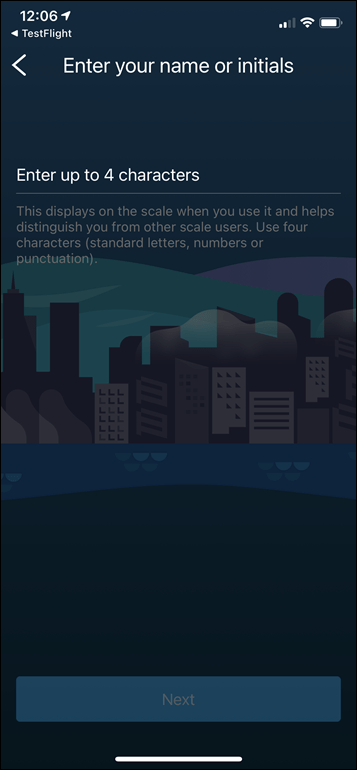
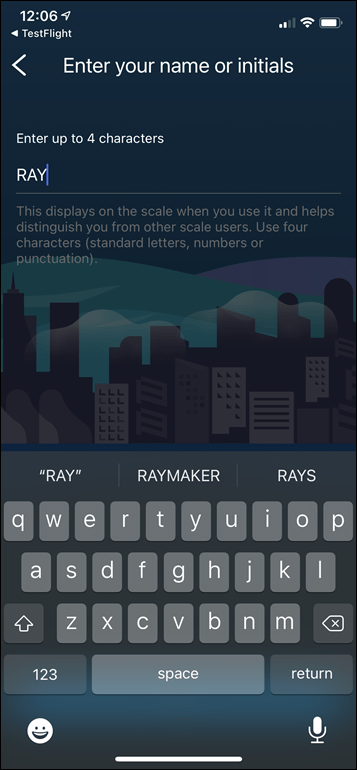
The app will ask you if you’d like to invite any other users to the scale. You can invite up to 15 people (thus presumably making 16 people in total). While it’s unlikely your Brady Bunch is that big in your house, this is more for team scenarios where multiple athletes are weighing in.
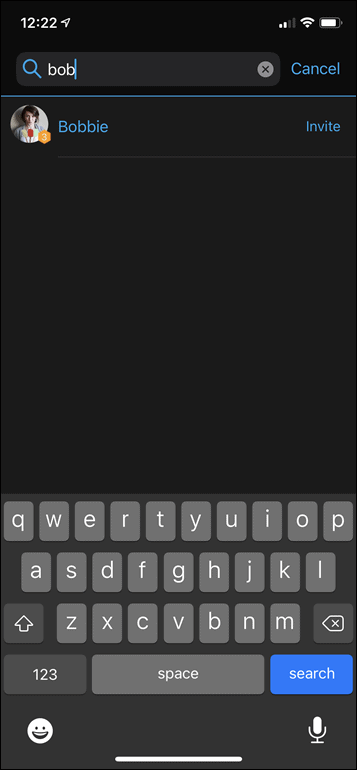
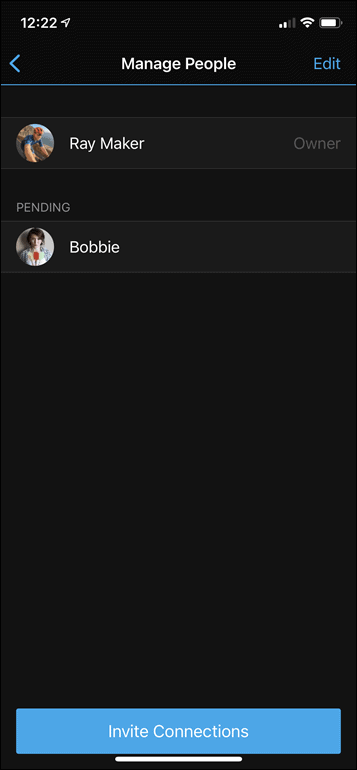
With all this done (which really only takes a minute or two), you’re good to go.
Weigh-ins and Data:
By now the scale will have updated itself and be ready to use. To use it, simply tap or kick it. Which will wake it up. This is a slight change from the Index 1 scale, where I can simply step on. In my case, simply stepping on the Index S2 does nothing. Once its awake, it’ll show the zero/empty weight:
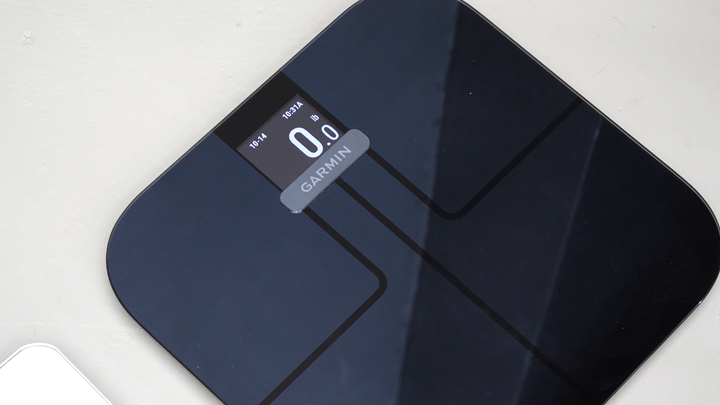
Go ahead and step on the scale, and you’ll see the weight fluctuate a bit for a few seconds before deciding on a final weight.
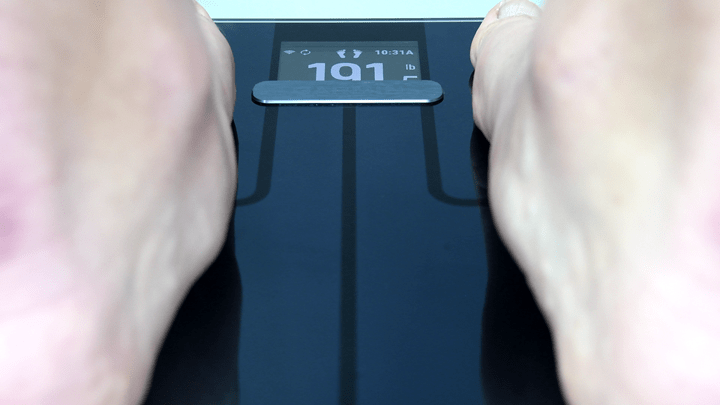
Once it decides on that final weight, the little weight icon will turn green, indicating that weight is locked in.
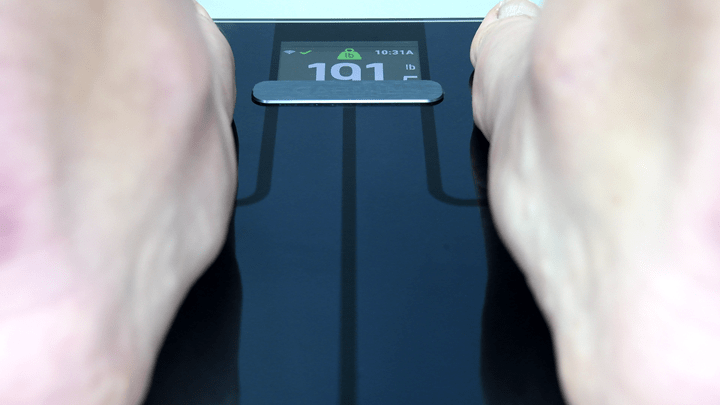
At this juncture you can step off the scale, it’s done its thing, and will flash the initials/name of who it thinks you are, based on your weight and the historical weight data it has. If it gets it wrong, you can simply use your foot to tap left or right, which iterates through the known users on the scale. Also, if you want to discard a weigh-in, the easiest way to do that is just simply go to the “?” user, and then let it vanish to nowhere. Or, you can just delete the data point afterwards on Garmin Connect (smartphone or web).
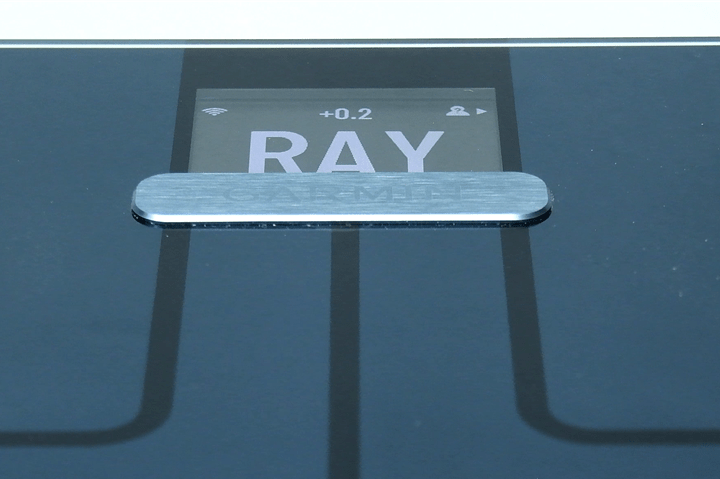
You’ll notice above it shows +0.2 above my name, this means +0.2lbs since the last weigh-in. The idea here being that if you wanted to do a workout (such as a long run on a hot day), you can compare the weight metric to the previous value quickly and easily. So you’d weigh yourself pre-run, and then again post-run. For example, I’ve found that for most 45-60min indoor trainer workouts I tend to lose about 2 pounds. Of which, the vast majority of that would of course just be water weight.
And while the goal isn’t realistically to try and have 1:1 replacement of fluids during a workout (especially running), you can at least use the information to guide your hydration choices.
The saving of multiple data points per day certainly isn’t new in the Garmin Index scale world, it’s been doing that for quite a while with the older scale, but it wouldn’t show the change in weight.
What is new with the S2 scale though is this little trendline chart seen on the scale. This is basically the pièce de résistance of the Index S2 scale, showing your weight over the last 30 days, as well as progress towards a goal line (in green).
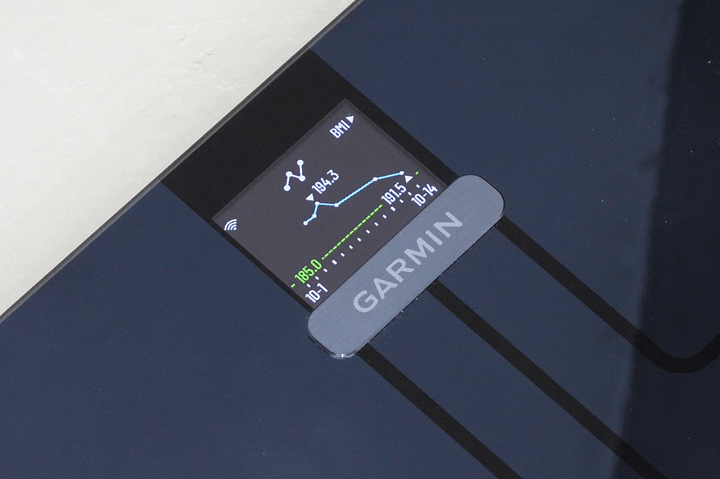
However, if you’re coming from the previous Garmin Index scale, you’ll first have to live with a bit of disappointment: This marquee feature doesn’t actually pull any of your historical Index 1 weight data in to the scale itself.
Seriously.
A connected scale that has all the data in the world, somehow doesn’t pull the data in from arguably Garmin’s best customers (the ones who are buying yet another scale from the company). It’s mind-boggling. So in my case, I’ve got piles of data that would show up here – and most importantly from a vanity standpoint, show up with a nice decreasing trendline over the past while. But nope.
And it’s easy to say ‘Sure, it’ll fill in over the course of the next 30 days’, and yes, it will. But that’s not the point. It’s entire point in life is to be a CONNECTED scale. It fails somehow at this most basic task for the most pro-Garmin customers. Yet, it pulls in the weather data just fine.
In any event, after it’s done showing you that trendline it’ll iterate through the following metrics: Body Mass Index (BMI), Body Fat Percentage, Body Water Percentage, Skeletal Muscle Mass, Bone Mass, and Weather. Another new feature with the Index S2 scale is the ability to customize which of these metrics it’ll show each time you step on it. So if you don’t want to see a particular metric you can disable it within the settings on the smartphone app:
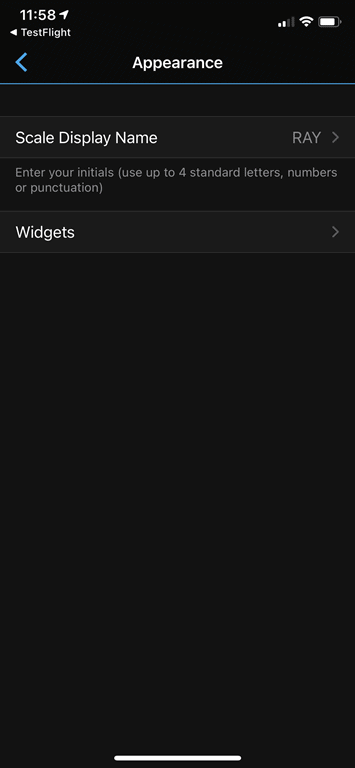
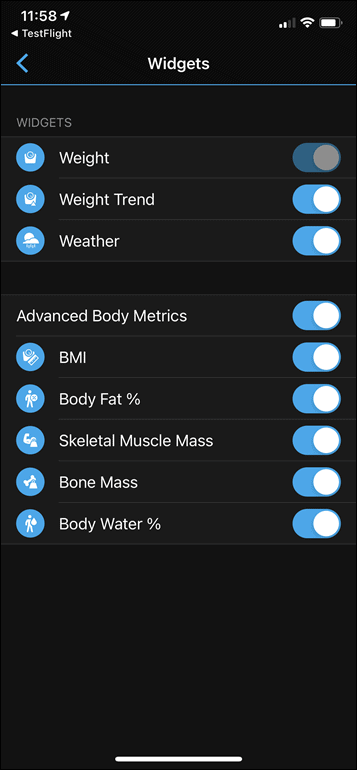
Note above though that you can’t have a ‘Biggest Loser’ style scale and not show weight at all (just take readings).
As it iterates through each of these data points it’ll show an icon next to it indicating what it is, such as muscle mass below.
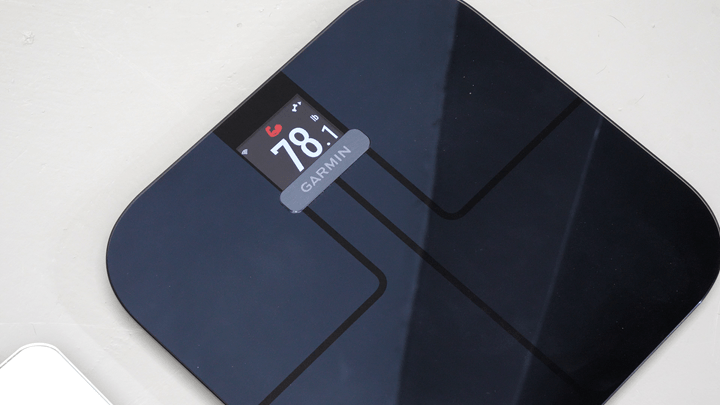
Or bone mass or body water percentage:
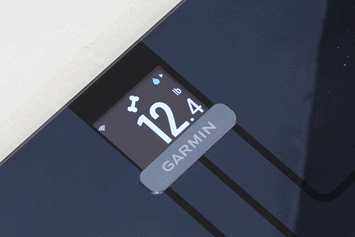
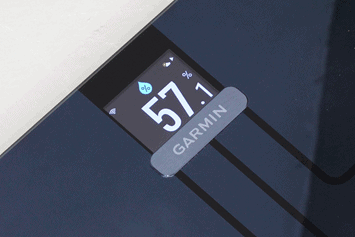
And yup, even the weather, showing the slated high/low for the day as well as the current temperature. The idea here simply being that if you’re getting ready in the morning and just going in or out of the shower, this could guide your clothing choices for the day.
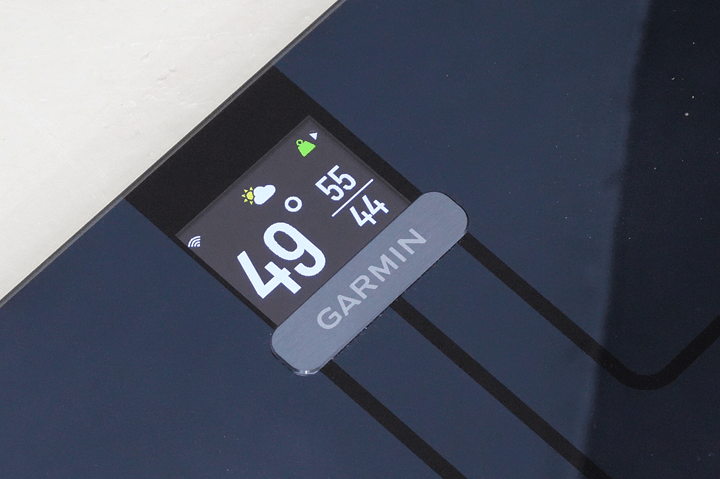
After all that’s done, it’ll display your weight one final time, and then shut itself off – waiting patiently for its 30 seconds of use each day.
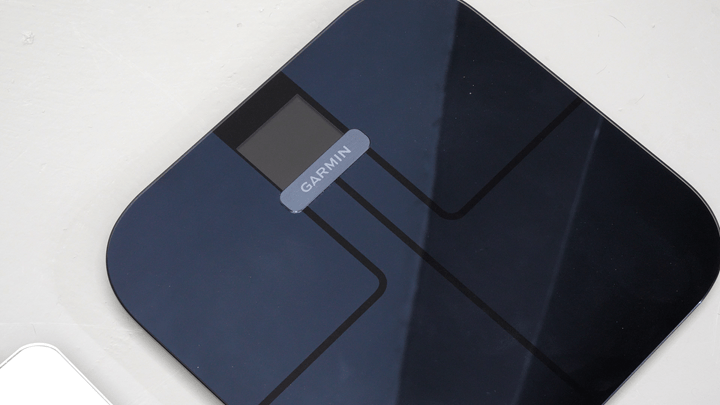
Behind the scenes this data is saved on Garmin Connect, and thus accessible from Garmin Connect Mobile or Garmin Connect. There’s a widget you can add to the dashboard to show your current weight. Alternatively, you can view more details in the ‘Weight’ section under ‘Health Stats’
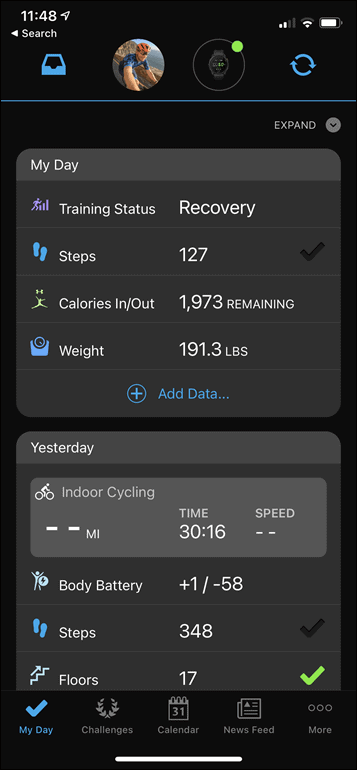
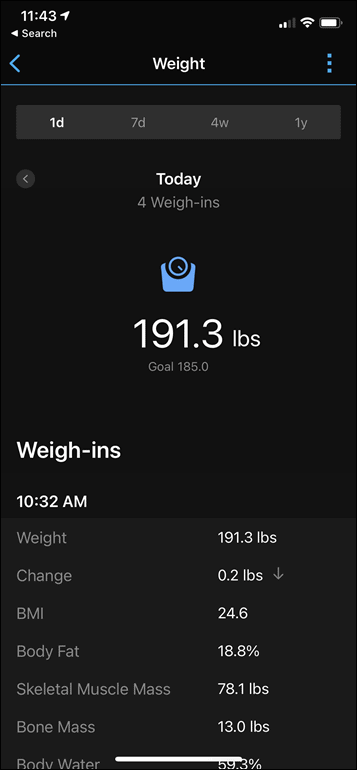
In the weight section you’ll see every individual weigh-in, as well as trending and even the variance of multiple weigh-ins on a single day (the little grey blobs indicated on certain days with multiple weigh-ins).
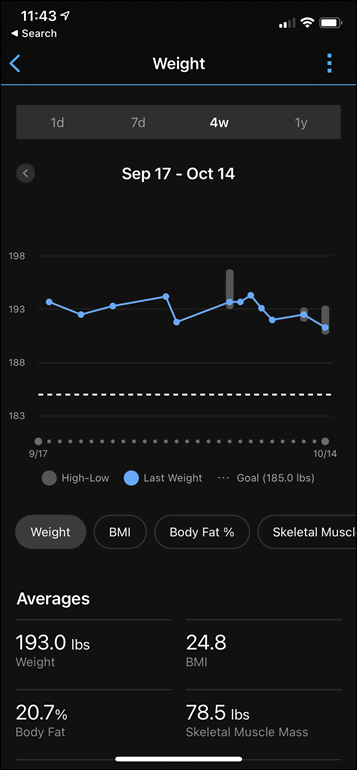
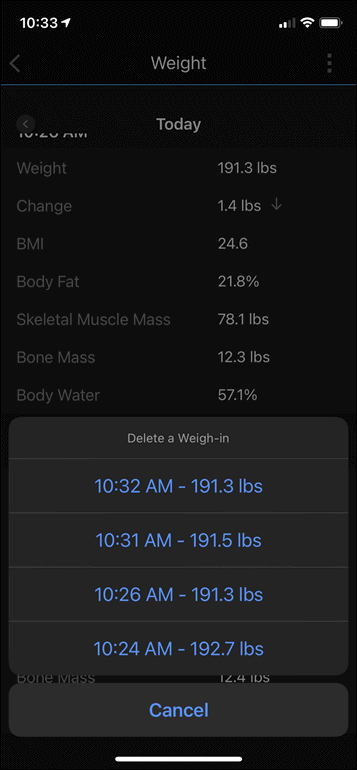
(Note: Above I was purposefully taking a bunch of weigh-ins slightly differently to show multiple weigh-ins on a single screenshot)
You can delete weigh-ins if you want, as well as add a weight goal, which will show up on your trending charts both on the app and on the device itself:
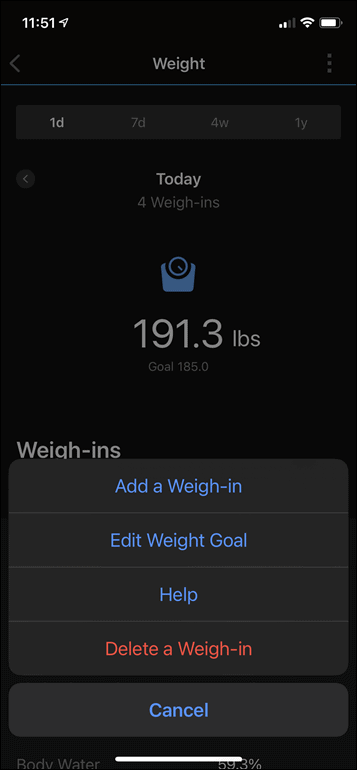
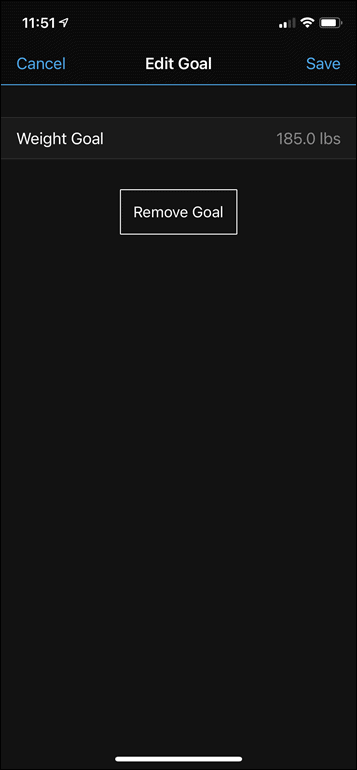
For the weight scale itself there are a few options in the Devices menu. As noted earlier you can change the widgets, as well as invite additional users to the scale.
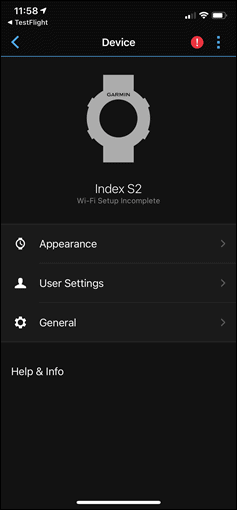
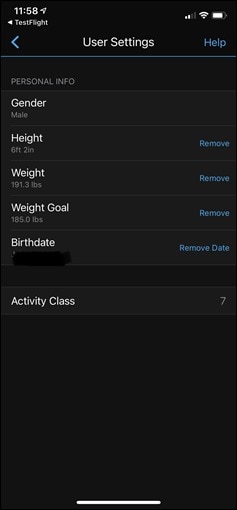
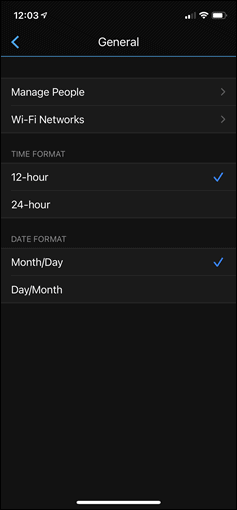
Now – what about accuracy? Well, given the current world climate it’s a bit difficult right now to waltz in and get a fancy body fat analysis and such done. Though, I have done so in the past and recruited a bunch of people to test various devices. When I look at the Index 2 vs Index 1, the weight is almost always nearly identical – such as .1lbs apart. The body fat however was pretty substantially different, usually about 2-2.5% (generally higher) with the Index 2.
I asked Garmin about this, and here’s what they had to say:
“For body fat and the other impedance-based metrics, there’s been some under-the-hood changes including tweaks to the algorithms. The tweaks were to allow for more accuracy and more sensitivity in the measurements. There will almost certainly be some noticeable differences between readings on the original and the S2. With more sensitivity, the S2 will allow for more fluctuations and movement over time in those metrics compared to the original.”
Now within the Index scales you can tweak your profiles Activity Class (seen above), which in theory improves accuracy for body fat measurements on more athletic people. Though, in my case it made no difference. Typically this would be for people closer to single-digit body fat %’s. There’s been too many late night Stroopwafels for me lately for that to impact my testing.
Anyways, as I was saying – if I look at impedance metrics like body fat and muscle mass, based on all the testing I’ve done historically, I don’t focus too much on the absolute values, and instead look more at trending. After all, the fact that one scale has me 2.5% higher than the other side by side is a great example of that. Undoubtedly Garmin would argue (perhaps correctly) that the newer technology/sensors/algorithms in the newer scales are indeed more accurate.
Ultimately though, for me I don’t put much value in these extended metrics using electro impedance like other scales (nor do I put much value in people using calipers, most folks screw that up – despite having done it ‘hundreds’ or ‘thousands’ of times).
Device & 3rd Party Integration:
The main appeal of buying a Garmin Index scale over any other scale is if you’re in the Garmin ecosystem. If you don’t have Garmin devices, then frankly the appeal evaporates pretty quickly, and there’s other scales that cost just half of the Garmin scale with basically the same features.
But within that ecosystem it’s pretty good. For example, your Garmin watch will automatically update your weight anytime it syncs with your phone, which, is basically 24×7:
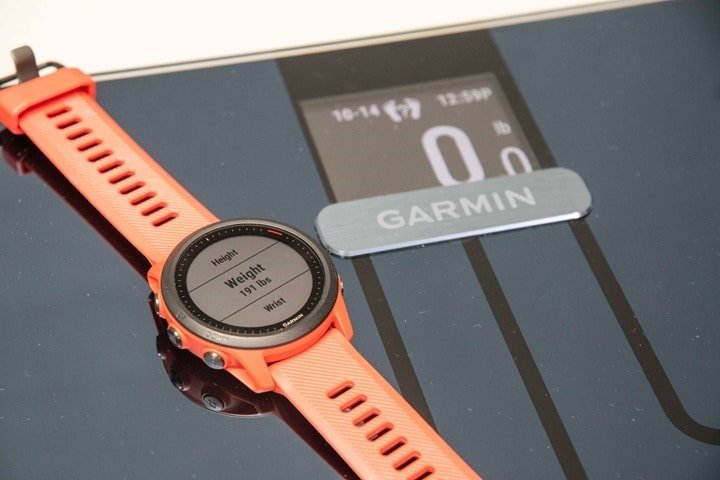
So that’s handy if you’re focused on losing weight, rathe than finding out three months later that your watch weight is still at a substantially higher value.
Moving to 3rd parties, things are super mixed. Some platforms support it, but many disappointingly do not. This isn’t entirely the fault of Garmin, but it’s also an area they could put some effort into convincing their partners (cough, Zwift). Assuming an app is supported though, you can link it up to get weight data automatically sent to it. For example, here’s TrainingPeaks:

Note though that this is a different setup than your regular Garmin workout/structured workouts sync, see below how there’s both a Health Sync option for weight data, as well as another one for workouts/activity data. Ideally this would be more cohesively presented to a user upon any link-up, but it’s not today.


But unlike Withings or Fitbit, there’s no clear landing page on all the services/partners Garmin supports here. So you kinda have to figure them out yourself. And, when there’s gaps, you’ve gotta figure those out too.
For example, with the huge surge in indoor training, apps need correct weight information to accurately simulate cycling courses/speeds. And while Zwift does support weight scale integration, they haven’t lit up the Garmin side of that equation. However, some creative 3rd party apps have basically made a bridge where you can do that via a Fitbit account, but, that 3rd party app (SmartScaleSync.com costs $ 15/year).

While I don’t use it myself, a bunch of people seem pretty happy with it. But realistically, this sorta thing shouldn’t be on 3rd parties. Garmin has a robust API/platform for this data, but just seems to lack the marketing or something for getting these 3rd parties onboard directly.
Summary:
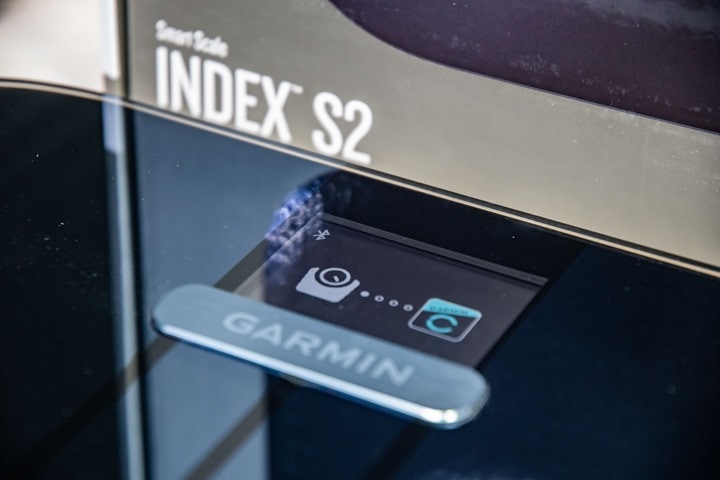
For the most part, we don’t really see major iterations in connected weight scales these days. Or these years. The repeatable pattern is every few years Withings, Fitbit, or Garmin will release a minor update of their scale with a handful of new features. Sure, a few people will upgrade their units, but for the most part this is just ensuring that the product doesn’t appear to be from nearly 5 years ago. Which is fine, it doesn’t have to be major upgrades each time. In the case of the Index S2, it retains the same expensive price as previous, but now adds the new color display and trending information.
Still, I was hoping for a bit better 3rd party support here – albeit that’s not entirely Garmin’s fault. While Garmin has done that development work, there’s gaps in partners picking it up. However, what is firmly in Garmin’s control is the lack of weight trendline information properly accounting for historical data for existing Garmin Index scale users.
As with all my scale reviews, whether or not you find value in the extended metrics beyond just simple weight is up to you. For straight baseline weight, I find most of these scales (even cheap department store scales), tend to be surprisingly consistent and accurate. Beyond that for electrical impedance based metrics like body fat, the accuracy varies quite a bit from model to model, and the value can also be a bit more questionable too.
I do in general find WiFi scales a far better option than Bluetooth only scales. WiFi scales tend to be ‘set it and forget it’, versus a Bluetooth scale usually has dependencies on having your phone nearby, the app opened, Apple or Google not having broken something in the recent update, etc… Whereas a WiFi scale doesn’t care about your phone and does it all behind the scenes.
Ultimately, if you’ve got a Garmin device and want weight automatically updated on your account/devices, there’s not many clean options. There’s some 3rd party integrations that have half-heartedly worked over the years (like MyFitnessPal syncing), but usually they eventually break. This tends to just work with minimal fuss, even if it’s at a substantial premium compared to competitor offerings. Now, how do I get YouTube running on that display?
With that – thanks for reading!

